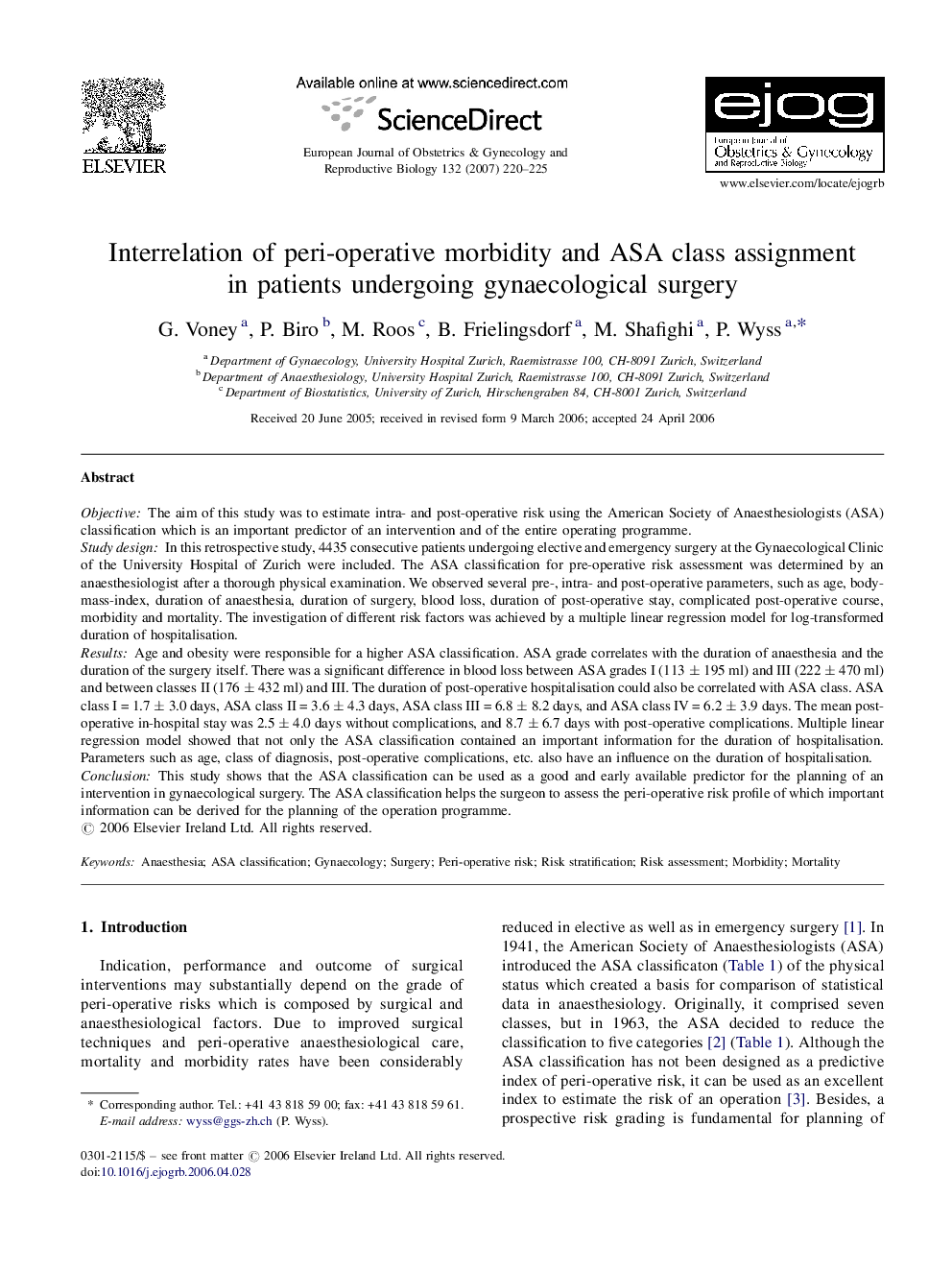| Article ID | Journal | Published Year | Pages | File Type |
|---|---|---|---|---|
| 3922151 | European Journal of Obstetrics & Gynecology and Reproductive Biology | 2007 | 6 Pages |
ObjectiveThe aim of this study was to estimate intra- and post-operative risk using the American Society of Anaesthesiologists (ASA) classification which is an important predictor of an intervention and of the entire operating programme.Study designIn this retrospective study, 4435 consecutive patients undergoing elective and emergency surgery at the Gynaecological Clinic of the University Hospital of Zurich were included. The ASA classification for pre-operative risk assessment was determined by an anaesthesiologist after a thorough physical examination. We observed several pre-, intra- and post-operative parameters, such as age, body-mass-index, duration of anaesthesia, duration of surgery, blood loss, duration of post-operative stay, complicated post-operative course, morbidity and mortality. The investigation of different risk factors was achieved by a multiple linear regression model for log-transformed duration of hospitalisation.ResultsAge and obesity were responsible for a higher ASA classification. ASA grade correlates with the duration of anaesthesia and the duration of the surgery itself. There was a significant difference in blood loss between ASA grades I (113 ± 195 ml) and III (222 ± 470 ml) and between classes II (176 ± 432 ml) and III. The duration of post-operative hospitalisation could also be correlated with ASA class. ASA class I = 1.7 ± 3.0 days, ASA class II = 3.6 ± 4.3 days, ASA class III = 6.8 ± 8.2 days, and ASA class IV = 6.2 ± 3.9 days. The mean post-operative in-hospital stay was 2.5 ± 4.0 days without complications, and 8.7 ± 6.7 days with post-operative complications. Multiple linear regression model showed that not only the ASA classification contained an important information for the duration of hospitalisation. Parameters such as age, class of diagnosis, post-operative complications, etc. also have an influence on the duration of hospitalisation.ConclusionThis study shows that the ASA classification can be used as a good and early available predictor for the planning of an intervention in gynaecological surgery. The ASA classification helps the surgeon to assess the peri-operative risk profile of which important information can be derived for the planning of the operation programme.
